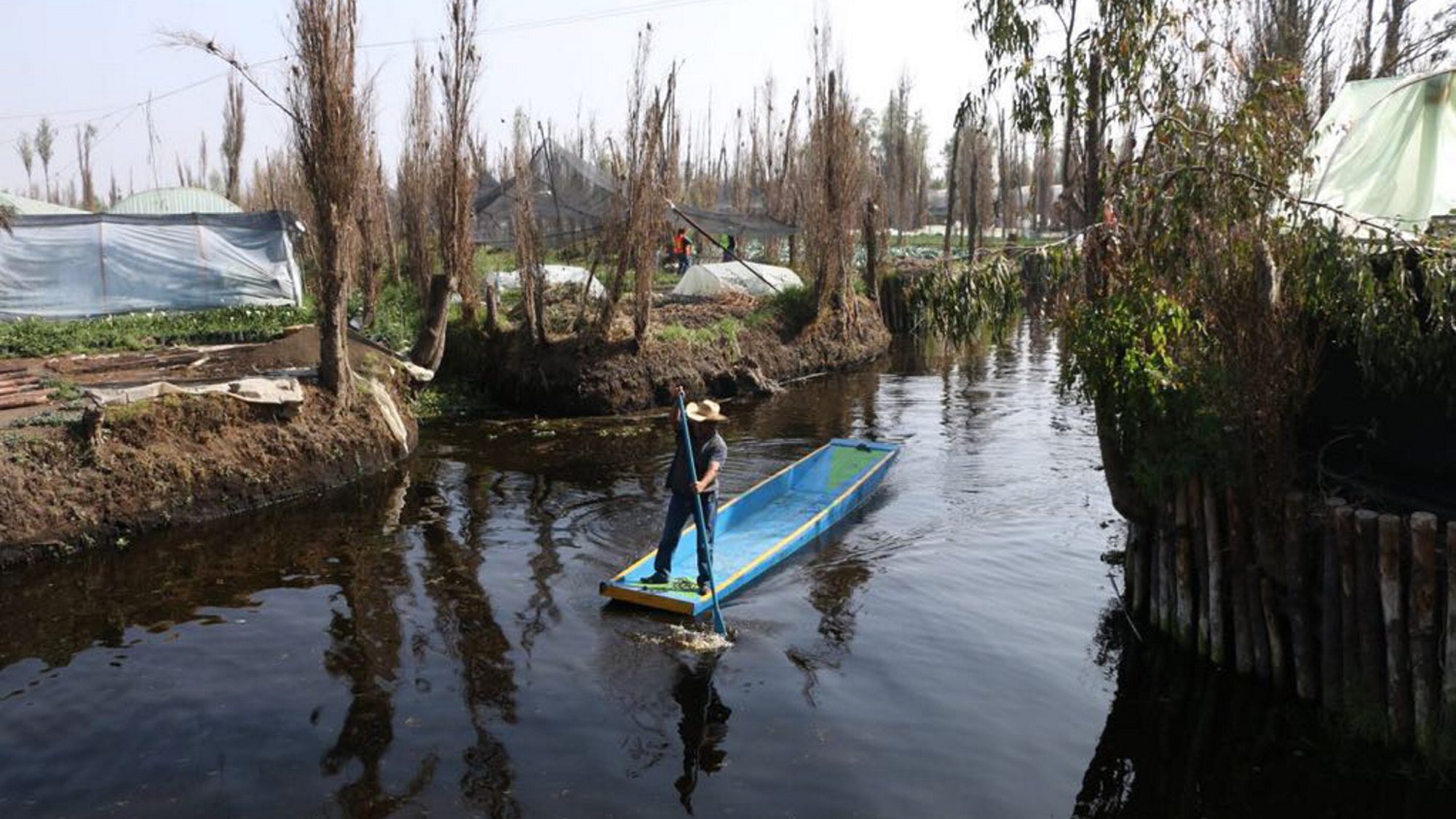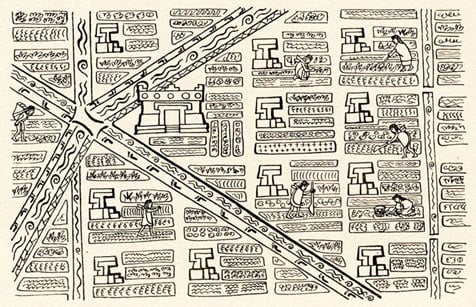Judi Lynn
Judi Lynn's JournalBrazil shocked by woman held as a slave for years at family mansion
JULY 6, 2020 / 3:39 PM / UPDATED 15 HOURS AGO
Brazil shocked by woman held as a slave for years at family mansion
Fabio Teixeira
4 MIN READ
RIO DE JANEIRO (Thomson Reuters Foundation) - The discovery of a domestic worker kept as a slave in a mansion in a wealthy part of Sao Paulo for years has shocked Brazil, with labor prosecutors seeking a large R$1 million ($190,000) in damages as the case moved to court.
The 61-year-old woman rescued by labor authorities last month worked for the same family since 1998, and was found living in a storage shed outside the mansion. Labor authorities asked for the name of the Brazilian woman to not be shared.
Court documents said for months on end the woman was not allowed into the mansion, slept on a couch, and had to use a bucket for a toilet. She depended on a neighbor for food and other basics and did not have a vacation day in 22 years.
The couple who live in the house, Mariah Corazza Barreto Ustundag and her husband Dora Ustandag, and Sonia Regina Corazza, Mariah’s mother and owner of the property, were charged with keeping a worker in slave like conditions.
. . .
The rescue shocked Brazilians with many taking to social media where Mariah Ustundag was identified as an executive for Avon. She was fired by the beauty company on June 26, Avon said.
Avon said that they will provide assistance to the victim.
“The Avon Institute ... decided to provide support to the victim, with psychological assistance, payment of one year’s rent in a location chosen by her and the purchase of household items,” the company said in a statement to the Thomson Reuters Foundation.
. . .
Last year Brazilian labor inspectors found 1,054 workers in slavery like conditions. In the past 25 years, more than 54,000 people were victims of slave labor.
More:
https://www.reuters.com/article/us-brazil-slavery-domestic-trfn/brazil-shocked-by-woman-held-as-a-slave-for-years-at-family-mansion-idUSKBN2472QY
This lady could use an angel.
Bodies of coronavirus victims are being dumped on the streets of Bolivia
Sian Elvin
Tuesday 7 Jul 2020 11:46 am
Bolivia is becoming overwhelmed with deaths from coronavirus as bodies are starting to pile up on its rubbish-strewn streets.
Funeral services in the city of Cochabamba, in the centre of the country, are overwhelmed as many bodies still need cremation or burial.
Cochabamba is one of the hardest cities hit in Bolivia, which is quickly becoming one of the new epicentres for the disease.
Authorities reported they collect between 14 and 23 corpses daily from homes or public spaces that are suspected of contracting Covid-19, but the causes of death are not immediately known.
. . .
The scenes of coffins or bodies lined with black plastic placed outside the houses in recent days seemed similar to those that occurred in the Ecuadorian city of Guayaquil, which was hit hard at the start of the pandemic.
Read more:
https://metro.co.uk/2020/07/07/bodies-coronavirus-victims-are-dumped-streets-bolivia-12954948/?ito=cbshare
The Trump-supported fascist coup is doing a heck of a job, isn't it? They didn't come prepared to govern, they only came to throw out the transformative indigenous President, Evo Morales.
Teen's coronavirus-themed prom dress made of duct tape is a work of art
By Kiely Westhoff, CNN
Updated 1:12 AM ET, Sun July 5, 2020

Illinois teen Peyton Manker made this dress out of duct tape for a scholarship competition.
(CNN)In January, 18-year-old Peyton Manker embarked on her journey to make a prom dress entirely out of duct tape for a contest to win a scholarship. After weeks of working on her submission, the Covid-19 outbreak not only canceled her prom but altered the course of her senior year.
Manker was not deterred by the fact that she would not get to wear her dress to prom. Instead, she felt inspired to create a dress that "documents a part of history."
Her coronavirus-themed dress features multiple images depicting life during the pandemic. Her vision for the dress began with wanting to capture her own experience. She represents her unforgettable senior year with a vibrant scene of students attending virtual graduation.

Manker's ideas evolved as the pandemic continued to impact people all over the world.
More:
https://www.cnn.com/2020/07/05/us/duct-tape-dress-coronavirus-trnd/index.html?utm_source=feedburner&utm_medium=feed&utm_campaign=Feed%3A+rss%2Fcnn_latest+%28RSS%3A+CNN+-+Most+Recent%29
How Did Cahokian Farmers Feed North America's Largest Indigenous City?
Native American farming was more sophisticated than your history textbook told you.
BY REINA GATTUSO
MARCH 28, 2019

Monks Mound at Cahokia. ETHAJEK/PUBLIC DOMAIN
JUST OUTSIDE ST. LOUIS, VISITORS can witness the monumental earthen mounds that mark Cahokia, the largest indigenous city north of Mexico. There’s a persistent myth that the original inhabitants of what is now the United States were all hunter-gatherers living in small communities. Yet these mounds—likely used for ceremonial and housing purposes by people of the Mississippian Culture—reveal an often-neglected history: an organized, socially diverse, Pre-Columbian city.
Experts disagree about Cahokia’s exact population—and most other aspects of its society. Yet many archaeologists estimate that at its peak around the year 1100, Cahokia housed 10,000 to 20,000 people, with up to 50,000 inhabitants living in the surrounding area—a population size rivalling or surpassing concurrent European cities. Yet conventional theories of Native American agriculture, which is depicted as relatively non-productive and reliant on a classic trio of corn, squash, and beans, fail to account for a fundamental question: How did the Cahokians feed so many people?

Monks Mound at Cahokia. ETHAJEK/PUBLIC DOMAIN
Gayle Fritz has an answer. Archaeologists have long argued that Cahokians, like other indigenous North American cultures, relied heavily on corn. That’s true, says Fritz, a paleoethnobotanist and emeritus professor at Washington University in St. Louis. But in her new book, Feeding Cahokia, Fritz uses data from more recent seed flotation studies to argue that Cahokian crops were much more diverse than previously believed. This supports interpretations of Cahokia as a densely populated, prosperous city—and challenges older assumptions about the simplicity of Native American farming.
For hundreds of years, scholars argued that pre-Columbian North Americans did little to reshape the environment. In the past decades, however, more recent scholarship has argued that pre-Columbian American societies were not only equally or more sophisticated than those of the so-called Old World—but that indigenous people used large-scale agriculture to reshape the Americas into what Charles C. Mann, author of 1491, calls “the world’s largest garden.”

A 1887 illustration of Monks Mound. PUBLIC DOMAIN
More:
https://www.atlasobscura.com/articles/native-american-farming-cahokia
The Coronavirus Is Bringing Back Aztec-Era "Floating Gardens"
13 HOURS AGO
Business is booming for farmers in Mexico City who plant on man-made islands.
AMANDA GOKEE

Chinampas.Especial/Zuma
In the south of Mexico City, about 100 miles of murky canals wind their way through the Xochimilco neighborhood. Here, the urban sprawl of one of the world’s densest cities yields to a lake region where indigenous farmers have been cultivating a unique system of floating gardens since pre-colonial times. Called chinampas, these floating gardens were built by the Aztecs to feed a growing population.
Xochimilco became one of the city’s main sources of food, but rapid urbanization in the 1900s meant less land available for farming. In 1985, when an earthquake struck Mexico City, many chinampas were abandoned as people who had lost their homes built shanty towns. Today, only an estimated 20 percent of the approximately 5,000 acres of chinampas are in use, and only 3 percent are used for farming.
But since the COVID-19 pandemic hit Mexico, interrupting the industrial food supply in important ways, small farmers have increased production and rehabilitated abandoned chinampas to fill the demand for fresh, local food.
“We’re talking about something that’s 1,000 years old. We have to preserve this,” says Raúl Mondragón on a Zoom call from his home in Mexico City. Mondragón has been recuperating chinampas since 2016, when he founded Colectivo Ahuejote. Now the virus is revealing the strength of this model in the midst of a crisis.
More:
https://www.motherjones.com/environment/2020/07/the-coronavirus-is-bringing-back-aztec-era-floating-gardens/
~ ~ ~

7 APRIL, 2014 - 22:47 DHWTY
Chinampas, The Floating Gardens of Mexico
Human sacrifice. This is probably the first thing that comes to people’s minds when they think about the Aztecs. However, there is much more to Aztec civilisation than this practice. By 1519, when the first Spanish conquistadors under Hernán Cortés landed in Mexico, the Aztecs were in control of an empire that was inhabited by a population of 5 to 6 million people. This large population meant that the exploitation of the landscape for agricultural purposes had to be intensified. This can be seen in the use of the chinampa agricultural system, the so-called ‘floating gardens’ which can be found on the shallow lake beds in the Valley of Mexico.

An a rtist’s impression of part of the canal network linking chinampas around Tenochtitlan. Photo source: Mexicolore
Although the origins of chinampa agriculture in the Valley of Mexico remain unclear, it is said to have been used throughout Mesoamerica centuries prior to the rise of the Aztecs. However, with the dawn of the Aztec Empire, a systematic programme of construction was carried out over a short period of time. This planning can be seen in the overall uniformity in chinampa size and orientation, as observed in aerial surveys. While the need to sustain large population provided prompted the Aztecs to undertake this massive project, its ability to organise manpower provided the means for its accomplishment.

More:
https://www.ancient-origins.net/ancient-places-americas/chinampas-floating-gardens-mexico-001537

Farmers on a trajinera, a traditional flat-bottomed river boat. RONALDO SCHEMIDT/AFP VIA GETTY IMAGES
How to Feed a Megacity Like the Aztecs
The chinampas that nourished Tenochtitlan may hold the key to better urban gardens.
BY REINA GATTUSO
WHEN CONQUISTADOR HERNÁN CORTÉS REACHED Tenochtitlan in 1519, he beheld a floating city. The temples and palaces of the Aztec capital gleamed white from an island in the middle of a vast lake, all spread under a searing blue sky. With an estimated population of 200,000, roughly the size of contemporary Paris, the city overflowed with people. Around the metropolis, an archipelago of lush islands emerged from the lake’s glassy surface, overflowing with plants.
These were the floating gardens, or chinampas, that fed the Aztec Empire. Constructed of layers of earth taken from the lake bottom, and held together by the tangled roots of diverse and rotating crops, chinampas are rich islands of soil that can produce up to seven harvests a year. The result of Aztec adaptations of earlier agricultural forms, chinampas’ efficiency has gained them UN recognition as a marvel of agricultural ingenuity.
Today, the parched asphalt streets of Mexico City—built on top of the filled-in lake that once bore Tecnochtitlan—show little trace of these lush Edens. But if you head to the southern borough of Xochimilco, where the cusp of the city touches the countryside, the landscape still bears an ancient crisscross of canals. Some of these chinampas have been in use since Aztec times. Most have been built and deconstructed again and again, part of a living current of agricultural knowledge flowing through centuries.

An early Spanish colonial document, the Florentine Codex, details chinampa agriculture in what is now Mexico. THE DIGITAL EDITION OF THE FLORENTINE CODEX/CC BY 3.0
“The way they are built is almost identical to the way they were built in pre-Columbian times,” says Roland Ebel, a Postgraduate Research Associate in Health and Human Development at Montana State University.
NOVEMBER 18, 2019
More:
https://www.atlasobscura.com/articles/floating-farms-mexico-city


Many, many more photographs with articles:
https://tinyurl.com/y94yo7pq
The Coronavirus Is Bringing Back Aztec-Era "Floating Gardens"
13 HOURS AGO
Business is booming for farmers in Mexico City who plant on man-made islands.
AMANDA GOKEE

Chinampas.Especial/Zuma
In the south of Mexico City, about 100 miles of murky canals wind their way through the Xochimilco neighborhood. Here, the urban sprawl of one of the world’s densest cities yields to a lake region where indigenous farmers have been cultivating a unique system of floating gardens since pre-colonial times. Called chinampas, these floating gardens were built by the Aztecs to feed a growing population.
Xochimilco became one of the city’s main sources of food, but rapid urbanization in the 1900s meant less land available for farming. In 1985, when an earthquake struck Mexico City, many chinampas were abandoned as people who had lost their homes built shanty towns. Today, only an estimated 20 percent of the approximately 5,000 acres of chinampas are in use, and only 3 percent are used for farming.
But since the COVID-19 pandemic hit Mexico, interrupting the industrial food supply in important ways, small farmers have increased production and rehabilitated abandoned chinampas to fill the demand for fresh, local food.
“We’re talking about something that’s 1,000 years old. We have to preserve this,” says Raúl Mondragón on a Zoom call from his home in Mexico City. Mondragón has been recuperating chinampas since 2016, when he founded Colectivo Ahuejote. Now the virus is revealing the strength of this model in the midst of a crisis.
More:
https://www.motherjones.com/environment/2020/07/the-coronavirus-is-bringing-back-aztec-era-floating-gardens/
Also posted in Environment and energy:
https://www.democraticunderground.com/1127138812
~ ~ ~

7 APRIL, 2014 - 22:47 DHWTY
Chinampas, The Floating Gardens of Mexico
Human sacrifice. This is probably the first thing that comes to people’s minds when they think about the Aztecs. However, there is much more to Aztec civilisation than this practice. By 1519, when the first Spanish conquistadors under Hernán Cortés landed in Mexico, the Aztecs were in control of an empire that was inhabited by a population of 5 to 6 million people. This large population meant that the exploitation of the landscape for agricultural purposes had to be intensified. This can be seen in the use of the chinampa agricultural system, the so-called ‘floating gardens’ which can be found on the shallow lake beds in the Valley of Mexico.

An a rtist’s impression of part of the canal network linking chinampas around Tenochtitlan. Photo source: Mexicolore
Although the origins of chinampa agriculture in the Valley of Mexico remain unclear, it is said to have been used throughout Mesoamerica centuries prior to the rise of the Aztecs. However, with the dawn of the Aztec Empire, a systematic programme of construction was carried out over a short period of time. This planning can be seen in the overall uniformity in chinampa size and orientation, as observed in aerial surveys. While the need to sustain large population provided prompted the Aztecs to undertake this massive project, its ability to organise manpower provided the means for its accomplishment.

More:
https://www.ancient-origins.net/ancient-places-americas/chinampas-floating-gardens-mexico-001537

Farmers on a trajinera, a traditional flat-bottomed river boat. RONALDO SCHEMIDT/AFP VIA GETTY IMAGES
How to Feed a Megacity Like the Aztecs
The chinampas that nourished Tenochtitlan may hold the key to better urban gardens.
BY REINA GATTUSO
WHEN CONQUISTADOR HERNÁN CORTÉS REACHED Tenochtitlan in 1519, he beheld a floating city. The temples and palaces of the Aztec capital gleamed white from an island in the middle of a vast lake, all spread under a searing blue sky. With an estimated population of 200,000, roughly the size of contemporary Paris, the city overflowed with people. Around the metropolis, an archipelago of lush islands emerged from the lake’s glassy surface, overflowing with plants.
These were the floating gardens, or chinampas, that fed the Aztec Empire. Constructed of layers of earth taken from the lake bottom, and held together by the tangled roots of diverse and rotating crops, chinampas are rich islands of soil that can produce up to seven harvests a year. The result of Aztec adaptations of earlier agricultural forms, chinampas’ efficiency has gained them UN recognition as a marvel of agricultural ingenuity.
Today, the parched asphalt streets of Mexico City—built on top of the filled-in lake that once bore Tecnochtitlan—show little trace of these lush Edens. But if you head to the southern borough of Xochimilco, where the cusp of the city touches the countryside, the landscape still bears an ancient crisscross of canals. Some of these chinampas have been in use since Aztec times. Most have been built and deconstructed again and again, part of a living current of agricultural knowledge flowing through centuries.

An early Spanish colonial document, the Florentine Codex, details chinampa agriculture in what is now Mexico. THE DIGITAL EDITION OF THE FLORENTINE CODEX/CC BY 3.0
“The way they are built is almost identical to the way they were built in pre-Columbian times,” says Roland Ebel, a Postgraduate Research Associate in Health and Human Development at Montana State University.
NOVEMBER 18, 2019
More:
https://www.atlasobscura.com/articles/floating-farms-mexico-city


Many, many more photographs with articles:
https://tinyurl.com/y94yo7pq
Trump used looted Venezuelan public money to build border wall with Mexico

An estimated $24 billion of Venezuelan public money has been looted, and the Trump administration has used at least $601 million of it to construct a militarized wall on the US-Mexico border.
By Ben Norton
Since the United States initiated a coup attempt against Venezuela’s elected leftist government in January 2019, up to $24 billion worth of Venezuelan public assets have been seized by foreign countries, primarily by Washington and member states of the European Union.
President Donald Trump’s administration has used at least $601 million of that looted Venezuelan money to fund construction of its border wall with Mexico, according to government documents first reviewed by Univision.
During his 2016 presidential campaign, Trump insisted countless times that he would “make Mexico pay” to build a gargantuan wall covering all of the roughly 2,000 miles (3,145 kilometers) of its northern border.
Unable to force the country to fund his $18 billion pet project, which has already cost an estimated $30 million per mile in southern Texas, Trump has turned to other questionable sources of financing.
Univision reviewed US congressional records and court documents and found that the Trump administration tapped into $601 million of the Treasury Department’s “forfeiture fund” to supplement the wall construction.
More:
https://thegrayzone.com/2020/06/29/trump-stolen-venezuelan-money-border-wall-mexico/
Indigenous leaders angry about coronavirus risk from Brazilian military visit
JULY 2, 2020 / 11:30 PM / UPDATED AN HOUR AGO
3 MIN READ
BOA VISTA, Brazil (Reuters) - Leaders of an isolated indigenous Yanomami community in Brazil have complained that a military mission to protect them from the coronavirus brought greater risk of infection to their people through contact with outsiders including journalists.
Federal prosecutors said they were investigating the visit for ignoring the wishes of Yanomami communities to remain isolated from society, violating rules of social distancing and distributing chloroquine to indigenous people.
On Tuesday and Wednesday, soldiers brought medical supplies by helicopter to outposts on the border with Venezuela and assembled Yanomami families to be tested for the novel coronavirus, an outreach effort recorded by a contingent of journalists.
“We don’t want to be used as government propaganda,” said Parana Yanomami. “We don’t want outsiders coming here to take photos of our children. The visit took us by surprise.”
The Yanomami are the last major tribe to live in relative isolation on a vast reservation about the size of the U.S. state of Indiana and have been invaded for decades by gold miners who have brought diseases fatal to their people.
More:
https://uk.reuters.com/article/uk-health-coronavirus-brazil-indigenous/indigenous-leaders-angry-about-coronavirus-risk-from-brazilian-military-visit-idUKKBN2440DZ
Is the Deep State Attempting a Hybrid War in Mexico?
Jul 3, 2020
Nino Pagliccia
An important article by journalist Ben Norton appeared on the online outlet The Grayzone describing the content of a leaked document that consists “of an executive summary of ‘Project BOA,’ outlining what it calls a ‘plan of action’ – a blueprint of concrete steps the opposition alliance will take to unseat AMLO.” AMLO is Mexican President Andres Manuel Lopez Obrador, and BOA stands for Bloque Opositor Amplio (Broad Opposition Bloc).
The document was presented by AMLO himself at a press conference in early June and the source of the leak remains unknown. Some of the alleged members of this “alliance” have denied the existence of such a document. However, its content is quite credible within the geopolitical context of the region.
WHO IS ANDRÉS MANUEL LÓPEZ OBRADOR?
Popularly known as AMLO by the initials of his name, he became president of Mexico in December 2018 after Mexican voters gave him a strong mandate on July 1, 2018, to change the course of Mexico’s domestic policies. López Obrador and his left of center National Regeneration Movement party (Movimiento de Regeneración Nacional – MORENA) dominated Mexico’s presidential and legislative elections.
López Obrador won 53.2% of the presidential vote, more than 30 percentage points ahead of his nearest rival, and won in 31 of 32 Mexican states. The MORENA party won solid majorities in the Senate and the Chamber of Deputies which convened on September 1, 2018.
More:
https://off-guardian.org/2020/07/03/is-the-deep-state-attempting-a-hybrid-war-in-mexico/
Did Corn Fuel Cahokia's Rise?
Did Corn Fuel Cahokia’s Rise?
Today, much of the corn (Zea mays) grown in North America is used to produce corn ethanol – a blend that is added to fuels, primarily gasoline.
But approximately 1,000 years ago, in what is now southern Illinois, corn may have played a pivotal role in fueling the rise of a Native American metropolis. A new study suggests that corn was the staple subsistence crop that allowed the pre-Columbian city of Cahokia to rise to prominence and flourish for nearly 300 years.
“A social change was taking place at Cahokia and corn basically helped fuel it,” said Thomas Emerson, an emeritus professor of Anthropology at the University of Illinois who led the study. The study findings were recently published in the journal American Antiquity.
Cahokia was the largest city in pre-Columbian North America. It was built by Native Americans known as the Mississippians, who were responsible for erecting some of the most impressive earthen mounds on the continent. At its height, the city boasted several large, flat-topped platform mounds – including the 30meter tall, four-terraced Monk’s Mound, which covered approximately 6 hectares at its base.
It was the city’s focal point and the largest earthen pyramid north of Mexico. Around A.D. 1050, Cahokia rose to dominate that region of the American Midwest where the Mississippi, Missouri, and Illinois rivers converge, a fertile floodplain known today as the “American Bottom.”
More:
https://www.heritagedaily.com/2020/06/did-corn-fuel-cahokias-rise/134037
Profile Information
Member since: 2002Number of posts: 160,522